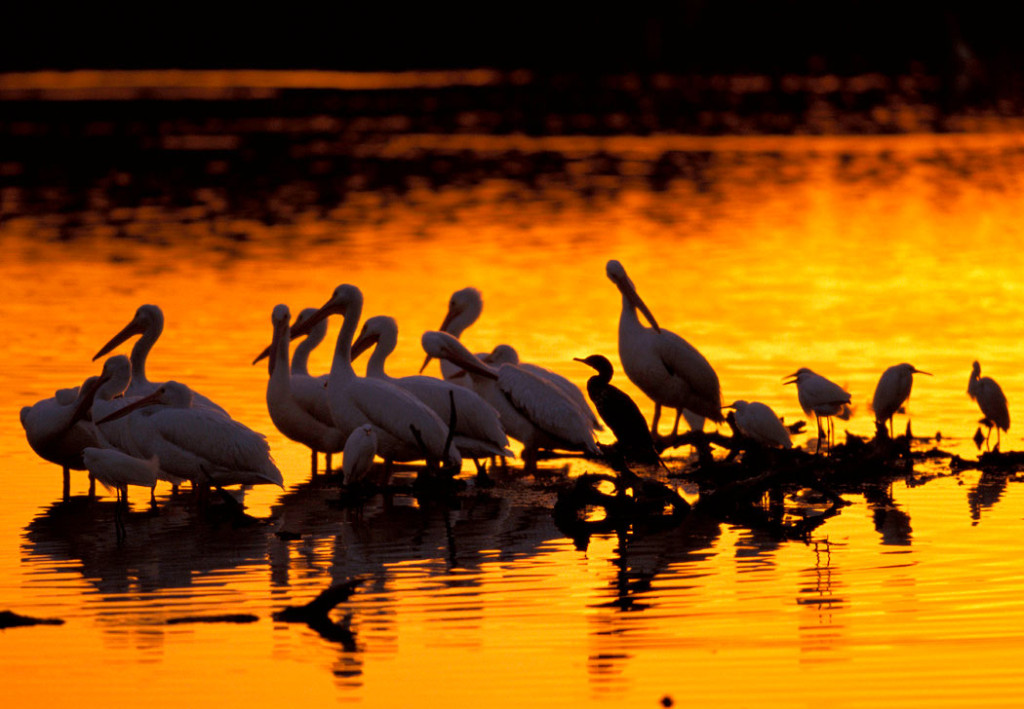
Wading birds at sunset photographed at J. N. “Ding” Darling National Wildlife Refuge. Photo courtesy of the US Fish & Wildlife Service, licensed Creative Commons Attribution.
It’s an exciting time for birders in Florida. The Great Florida Birding Trail (GFBT) is a 2,000-mile trail through the state, its numerous sites selected for their excellent birdwatching or bird-education opportunities. The trail is split into four sections—the east, the west, the Panhandle, and South Florida—and trail maps can be downloaded from the GFBT website. Even if you focus your energies on the western or the Panhandle sections of the trail, there’s too much area to cover in a single trip. Pick a smaller section of either one, or play it fast and loose and hit a few spots in each, like these.The Lower Suwannee National Wildlife Refuge extends north and south along the Gulf Coast from the Nature Coast town of Suwannee and is one of the largest undeveloped river delta-estuarine systems in the United States. The refuge headquarters is on Highway 347, 16 miles west of U.S. 19, with a nearby river trail and boardwalk from which to see migratory songbirds. Citrus County is home to 250 bird species, with red-cockaded woodpeckers, Bachman’s sparrows, American white pelicans, and Florida scrub jays among the more rare. The county has its own birding website.
You can see a more dense concentration of Florida scrub jays at Cedar Key Scrub State Reserve, which protects one of the fastest-disappearing habitats in Florida. The park has 12 miles of marked walking trails. Also in Cedar Key, the Cedar Keys National Wildlife Refuge is accessible only by boat but is worth the effort—you’re likely to see egrets, white ibis, cormorants, herons, pelicans, and anhingas.
Once on this island in Lee County, you can do a little birding warm-up, looking for some of the many resident bird species. You’ll find rare white pelicans hanging out in Pine Island Sound and ospreys and eagles nesting on telephone poles above the bike paths and along Sanibel-Captiva Road. The lighthouse area of Sanibel is a good place to see birds, as are the mangrove islands off Pine Island Sound, as is Tarpon Bay on Sanibel.
You’re going to hit paydirt at J. N. “Ding” Darling National Wildlife Refuge, which takes up half of Sanibel Island. It’s serious birder territory—everyone is equipped with high-powered binoculars and huge camera lenses. There’s a naturalist-led tram ride on which you’re bound to see rare species, colorful species, and important life-list species. There are more than 238 species in the refuge, among them tricolored and little blue herons, black-crowned night herons, ibis, wood storks, peregrine falcons, roseate spoonbills, and anhingas. The best time to go is early morning, about an hour before or after low tide.
Excerpted from the Fourth Edition of Moon Florida Gulf Coast.